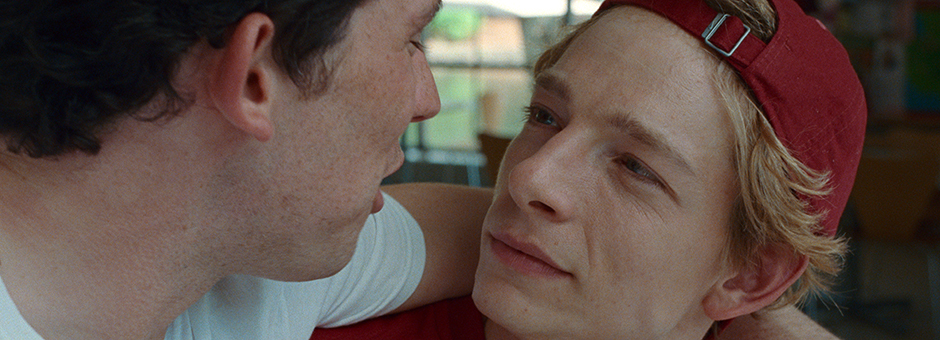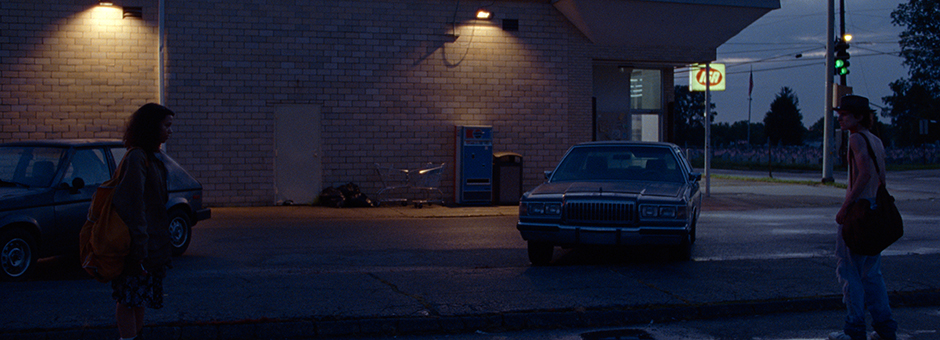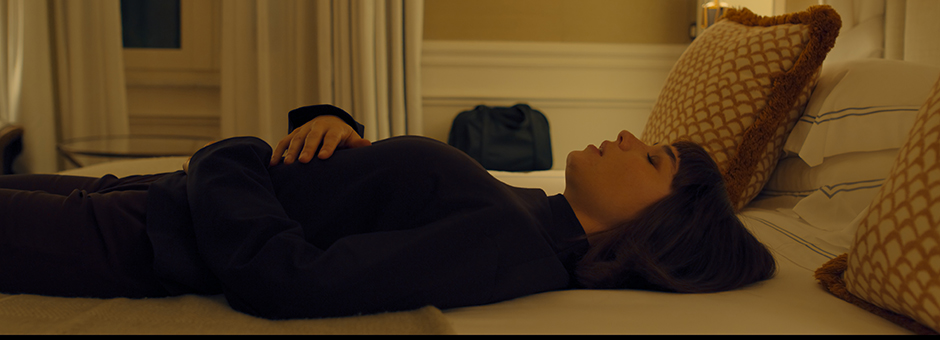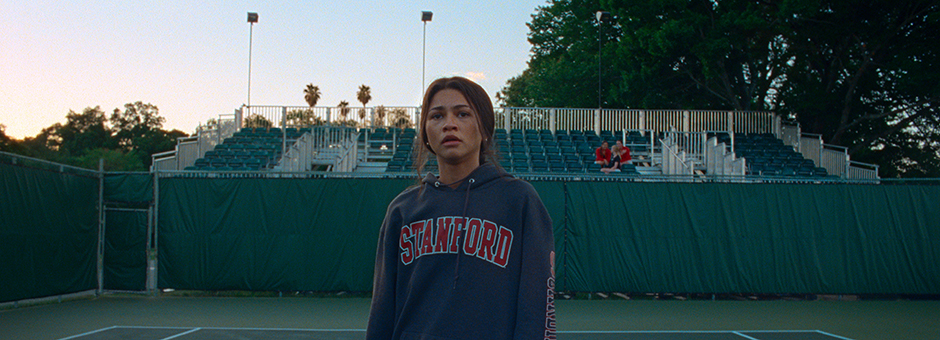Meet The Colourist
Claudio Del Bravo
Senior Colourist, Frame by Frame, Rome
Claudio Del Bravo is a senior colourist and head of long format at Frame by Frame in Rome, Italy. He has years of experience grading a variety of formats, including commercials, indie, film and TV.
Del Bravo has an ongoing and strong collaboration with talented Italian film director, Luca Guadagnino, having worked together on Challengers (2024), Bones and All (2022) as well as his latest project, Queer (2024). Other projects include Amazon original by director Arnaldo Catinari, Citadel: Diana (2024), Enea (2023), Amanda (2022), Bang Bang Baby (2022), Aston Martin (2021), My Brilliant Friend (2018-2019) and Indivisibili (2016).
Can you tell us about your journey to becoming a successful colourist?
My journey as a colourist began with a deep passion for the visual arts and cinema. I studied arts and entertainment at university, which gave me a solid foundation in the theory and history of moving cinema.
After finishing my studies, I started working at a post-production lab in Rome, initially as a conformer. It was during this time that I discovered my passion for colour grading. I experienced the industry transition from analogue to digital, which was a fascinating period, working with some of the earliest DI software. This period really shaped my understanding of both technologies, analogue and digital workflows, which has been invaluable throughout my career.
About 12 years ago, I joined Frame by Frame when the post-production department was newly formed. It was an exciting challenge to help build something from the ground up. My goal was to make it grow into a major player in the Italian film industry and compete on an international level. Over time, by focusing on quality and surrounding myself with talented professionals, I helped the company progress from working on commercials and smaller films to handling major international projects.
What sort of content do you work on at Frame by Frame?
These days, I mostly work on long-form content like feature films and TV series, but I started out with commercials and indie films. The variety is part of what makes this job so exciting – the diversity keeps me on my toes and allows me to continuously grow as a person.
How long have you been grading on Baselight? And why Baselight?
I’ve been using Baselight for about nine years now. In Italy, Baselight isn't as widespread as in other countries, but I knew from the beginning that it was the right tool for us. Baselight has allowed us to distinguish ourselves with complex workflows and complete creative freedom.
The Base Grade feature is particularly brilliant as it provides incredible control, especially to touch highlight. I am also a huge fan of new tools such as Texture Equaliser (combined with paint, for example) and Texture Highlight.
Have you tried Baselight 6.0? If so, what are your thoughts?
Yes, I’m currently using Baselight 6.0 on Queer, Luca Guadagnino’s latest film.
The new Chromogen tool has already become one of my favourites. It offers a new way to control the image and create unique looks.
Face Warp within the new Face Track feature is also remarkable – it’s incredible how fast and accurate it is! What used to take hours can now be done in minutes – tasks like making shapes around the eyes for hundreds of shots.
Both these tools are impressive leaps forward in efficiency and creativity.
What’s your career highlight to-date?
My career has grown alongside Italian cinema. I’ve had the privilege to work on some fantastic projects, which have received significant recognition here, like films by Edoardo De Angelis, Mario Martone and Riccardo Milani.
I have also had the opportunity to work on international projects like My Brilliant Friend (2018-2024), an HBO series, which allowed me to challenge myself with global standards and audiences. This series was also one of the first projects in Italy to be graded in HDR, which made it even more special.
That said, the highlight of my career has been my ongoing collaboration with film director, Luca Guadagnino. Starting with Bones and All (2022), then Challengers (2024), and now Queer (2024), these projects have taken me to new creative heights. Collaborating with Guadagnino has been a dream come true, and Challengers is probably the most important project I’ve worked on so far.
How would you describe your grading style?
I’d say my style is deeply respectful of the cinematographer’s work. I usually choose a naturalistic and gentle style, gradually creating the desired result.
I approach each project with the belief that everything in the frame—the lighting, set design, costumes—is part of the cinematography. My job as a colourist is to bring all these elements together and help them serve the narrative. My goal is to serve the film’s story and communicate its message through elegant colour choices.
How do you use colour to communicate with an audience? Can you provide an example?
Colour plays a vital role in enhancing the audience’s emotional experience. For instance, in Bones and All, I had the pleasure of working with the talented DoP, Arseni Khachaturan, to create a contrast between the expansive, warm American landscapes and the darker, more intimate moments. Despite the gruesome theme of cannibalism, it’s ultimately a love story, so the challenge was to balance horror with a sense of tenderness and poetry. Colour played a huge role in achieving that balance. The result was a mix of unsettling, beautiful visuals.
On Challengers, I took a different approach. The goal was to reflect the elegance of the tennis world while maintaining a sense of joy and vibrancy. The colours had to feel elegant, but also light-hearted, and that was a fun challenge. DoP Sayombhu Mukdeeprom’s colour choices on set were the key in creating that sense of beauty.
Do you prefer to get involved with look development before/during the shoot of a movie? If so, why?
I always prefer to get involved as early as possible. Establishing a visual tone at the start helps guide the project in the right direction from the very beginning. For instance, I’m currently working with Sayombhu again on Queer, and we have developed a look inspired by the Technicolor ‘three-strip’ process that evokes the rich colours of early 50’s films. Reference to old films like Black Narcissus (1947), Amarcord (1973) and Edward Hopper’s paintings helped us create a distinct aesthetic. It also saves time in post-production, as everyone is already aligned on the visual goals. This kind of collaboration helps to ensure that the final result matches the original vision. We started by creating a LUT for the dailies, which then evolved into an LMT for ACES in the final post workflow.
How and at what point did you get involved in Challengers (2024)?
I got involved quite early in the process, working closely with Sayombhu during pre-production to define the look. Challengers was a mix of formats—35mm (3 and 4 perf), ALEXA, and lots of VFX. We used an ACES workflow to ensure that everything blended seamlessly, and Baselight was the natural choice to handle the complex workflow. It was an exciting challenge, especially with the mix of analogue and digital elements.
Was that the key challenge for you on this movie?
Yes—blending different formats, sets and periods of the narrations, into a cohesive visual language and maintaining a consistent look across different environments (also technical) and emotional tones. The film explores a range of intense emotions, and we wanted to reflect that through the colour palette without being too overt. We wanted to create a visual pop to the film, in the best sense of this word. To us ‘pop’ doesn’t mean simplistic or superficial, but rather enjoyable and fun. All this combined with that incredible electronic and techno soundtrack creates a ‘match’ that makes you jump out of your seat.
What was the desired look and how did you achieve it?
We aimed for a modern, clean look while still preserving the warmth and texture of 35mm film. I started by grading the HDR version to establish the overall tone, then refined it in the cinema room to ensure the transition between formats felt natural. The result is a film that feels simultaneously classic and contemporary – shot on film, but with a modern edge.
After the main P3 DCI version graded in theatre with Sayombhu and Luca, I moved again to the HDR Dolby Vision workflow to obtain all the other versions. Baselight allows me to have multiple trims (in multiple layers) for different targets (including Dolby Cinema) and everything merged in the same timeline. Lovely!
Did you work to any visual references in this film?
Yes, we looked to classic tennis films and photography for inspiration, aiming to create a world that feels glamorous and vibrant. We wanted it to be evidently shot on film, but still with a modern touch. It was a balance between embracing the elegance of the sport and maintaining a sense of authenticity. The visual references helped us maintain that balance throughout the colour process.
How did you work with the DoP Sayombhu Mukdeeprom and director Luca Guadagnino?
The collaboration was, as always, very close. Sayombhu and I worked to create a base look that we were happy with, and then showed it to Luca for his inputs. Luca trusts Sayombhu's experience very much, having worked together for a long time, and is very detail-oriented – always focused on ensuring that the images serve the story first of all.
The visual aspect must always be a tool to achieve his unique narrative style.
What are you working on now/next?
I’m currently working on Queer, Luca Guadagnino’s latest film, showcased at Venice Film Festival and Toronto International Film Festival (and to follow at New York Film Festival), as well as a couple of new high-end TV series and Italian movies. I’m really excited about what’s coming next!
Join In
If you want to participate in our MTC programme, we'd love to hear from you. Contact:
Alexa Maza
e: [email protected]
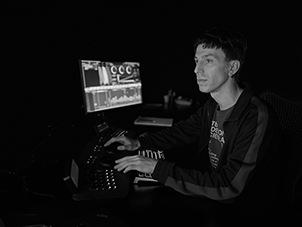
“Face Warp within the new Face Track feature is remarkable. What used to take hours can now be done in minutes – tasks like making shapes around the eyes for hundreds of shots.”
Details
Colourist: Claudio Del Bravo
Role: Senior Colourist
Web: Frame by Frame




